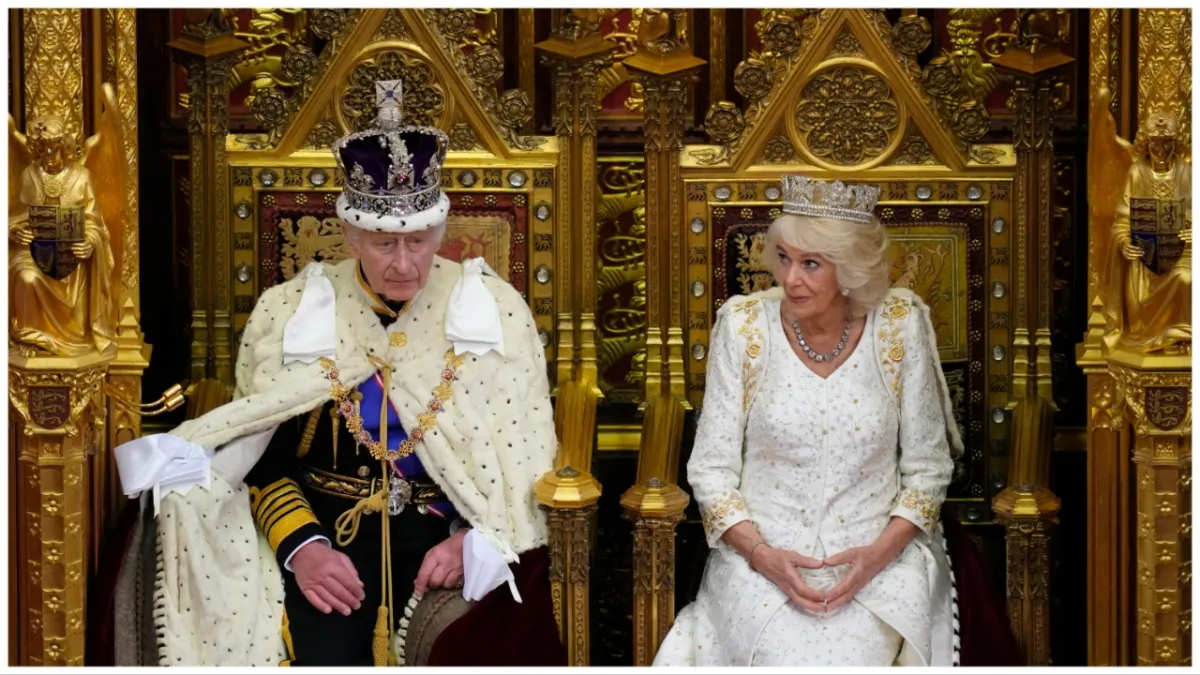On November 11, King Charles III delivered his first Opening of Parliament speech as King of England. This speech is part of British tradition to commemorate the start of a new parliamentary session. Due to his mother’s long reign of 70 years (the longest of any British monarch), Charles became the first king to open parliament since King George VI in 1950.
But the general public was more concerned with King Charles’ wardrobe than with the priorities he outlined for Parliament, which included curbing youth smoking, tougher sentencing for serious offenders, and increased investment in public transportation. Charles was decked out in the Imperial State Crown for the entirety of his speech, unlike his mother, who would remove the crown and place it on a pillow beside her. Decked out with nearly 3,000 jewels, the crown weighs in at nearly three pounds. For Queen Elizabeth, this made it too cumbersome to wear while trying to effectively engage in public speaking. But apparently, King Charles wasn’t interested in following his mother’s example. This set the monarch up for lots of criticism as he launched into remarks concerning the cost of living for working families.
Numerous people took to social media to mock the monarch and call out the oxymoronic pairing of extreme opulence with a passing mention of economic concerns for ordinary citizens. While the monarch’s crown is worth between £3 and £5 billion pounds, the average UK household income is on the decline. According to some polling, another item on the decline is popular support of the British monarchy. Young Britons in particular overwhelmingly see King Charles as out of touch with regular people.
At his coronation in May, King Charles demonstrated a fondness for lavish displays. The coronation, which was funded by British taxpayers, saw Charles wearing three different crowns. Queen Camilla clutched a controversial scepter made of elephant tusks that enraged many animal rights activists and harkened back to England’s imperial past.
There are currently 34 constitutional monarchies around the globe where royals like King Charles serve as sovereign heads of state. They do not pass laws or play a direct role in governance. Theirs is a symbolic figurehead role. This is in contrast to the handful of absolute monarchs who still reign today in parts of Africa and the Middle East.
Will King Charles scale back as he has sometimes claimed he intends to do? The worldwide public will have to wait and see. His coronation was the most expensive of the modern era, costing taxpayers £50 to £100 million pounds. As the British public faces a downward trending economy, the King’s remarks of mindfulness towards the working people may echo as hollow if his opulence continues at full throttle. Perhaps it’s time to set aside at least one of those three crowns. The Imperial State Crown which the King wore during his Opening of Parliament remarks does have a storied past, having accompanied Richard III into the Battle of Bosworth Field. The Black Prince Ruby (which is actually not a ruby but a spinel) was a treasured item of Henry VIII.
Another jewel on the Imperial State Crown perhaps best exemplifies the current bind of the British monarchy. Set into the band of this crown is the Cullinan diamond, the largest diamond in the world.
South Africa has called for the return of the Cullinan diamond which England mined in South Africa during its time of colonization and exploitation of the continent. Over 8,000 people have signed a petition calling on the monarch to return the treasure to South Africa where it can be displayed in a museum. While King Charles has said he supports research into the connection between the British monarchy and slavery, many think it unlikely that the world’s largest diamond will return to South Africa where it was unearthed. Perhaps the monarch will at least stop wearing it while discussing the concerns of working people.
(featured image: Kirsty Wigglesworth – WPA Pool/Getty Images)









Published: Nov 12, 2023 03:49 pm